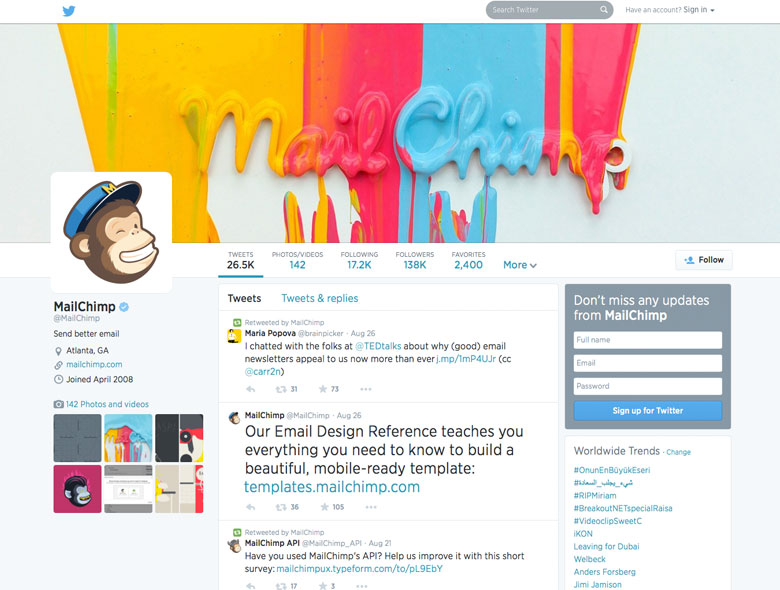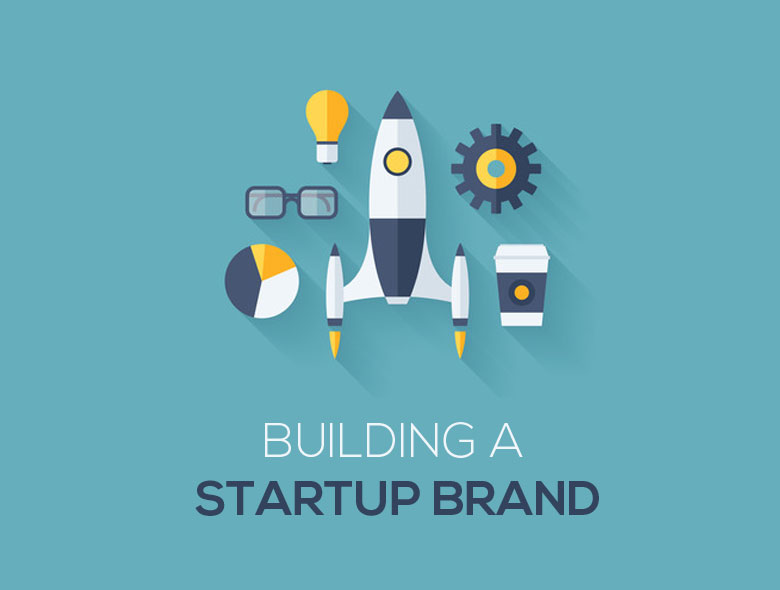Do you have the next big tech startup brand? Excellent! Without constant innovation, we would have stale software and a never-ending list of problems waiting to be tackled by someone, someday.
In this post, I’m going to share with you the steps necessary for turning your idea into an actual company. I can’t tell you how to build your product, but I can tell you how to turn it into a business and more importantly into a brand. I have also written another article on the top 50 blockchain startups and their identities which you may find interesting. You can also read a similar article on how to build a medical brand.
Let’s get started!
1. Perform an Industry Analysis for your tech startup brand
Before you invest a lot of time and money into launching your tech startup, you’ll first want to conduct industry analysis to make sure you have a profitable business idea on your hands.
During the industry analysis phase you’ll do three things:
- Determine if your company will fill a customer NEED vs. a want
- Conduct a competitive analysis
- Put together buyer personas to determine your brand positioning
Need Vs. Want:
First, you’ll determine if the product or service you have in mind for your startup will fill a customer need or want. If you can fill a customer need you will likely be very successful for many years.
A company that fills a “need” sees a big issue within an industry and fixes it. The product or service this type of company offers because of a necessity versus a nice-to-have.
MailChimp, a low-cost email marketing platform, fills a need for many companies who would otherwise have no way to blast out targeted marketing messages to their email lists.
Without a service like MailChimp, small businesses would have to use gmail or outlook to send mass emails which is time consuming and doesn’t allow for much creativity when it comes to the look-and-feel of the email. MailChimp also allows companies to track metrics for their email marketing which is highly important for determining if the emails are effective. MailChimp fills a NEED for its users.
On the other hand, Desk is more of a nice-to-have software option for many small companies who can handle their customer service tickets with a strong attention to detail and a basic email platform like Google mail. In other words, if budget cuts come, Desk is likely to get the axe but MailChimp is likely to remain around.
It’s good to be a company that fills a need.
Competitive Analysis:
The next step in your industry analysis is learning what the competitive landscape looks like. You’ll want to determine:
- Who are your direct competitors? What about indirect?
- How much do your competitors charge for their products / services?
- What type of marketing are your competitors doing? Do they seem to be good at it?
- What type of value proposition are your competitors using in their messaging?
- What are the websites of your competitors like? What is the messaging like?
(You can find in-depth information on how to conduct a competitive analysis here).
While you’re answering these questions you’ll also want to consider how you can demonstrate a competitive advantage upon entering the market.
What about your product or service will make you better than everyone else? How can you convey that message to consumers? Putting serious thought into this will help you win customers much more easily than if you launch without a clear value proposition.
Buyer Personas
A buyer persona is a fictitious person who has the characteristics and interests of your ideal buyer. For example, if your tech startup created medical software your persona might look something like this:

Your buyer persona should include demographic information, values, interests, what issues he/she experiences that your software could alleviate, a-day-in-the-life storyline and more. The goal of writing out a persona is to help you identify exactly who your customer is, where your product fits into his/her day and how you should frame the sale.
If you are unable to write a detailed persona about your ideal customer you do not yet know enough about your audience and should do more research before moving on to the next step.

2. Take Care of the Legal Details
Once you have performed your industry analysis and are sure you have a product or service that will help many people, it’s time to take care of the legal details that come along with launching a tech startup.
During this phase you will:
- Pick your company name
- Incorporate your business
One of the most important steps you’ll make early on in your building your tech startup brand is choosing a company name. You want something easy to remember and easy to spell that also has a domain name available.
The state within which you want to incorporate will usually have an online registry available where you can check to make sure the name is available to incorporate.
Each state will have different rules regarding the way it handles taxes and other legalities. Many tech startups choose to incorporate in Delaware because of it’s friendly policies, but you should research which state is best for you; it may be your home state.
When it comes down to incorporation you will have a few options but the most popular are the c-corp, s-corp or the limited liability corp (aka the LLC).
The LLC and the s-corp allow you to file your business taxes along with your personal taxes and are very easy to set up. If you aren’t planning to raise any money for your startup, you might elect to incorporate as an LLC or s-corp for simplicity sake (please keep in mind I am not a lawyer and it is advisable that you check with one about your options).
However, if you plan to raise money for your startup, particularly in the form of venture capital, you will likely want to incorporate as a c-corp. A c-corp allows you to distribute shares of stock between founders, investors and employees.

3. Create a Brand Identity
During the brand identity phase you get to embark on the fun and creative part of building a company.
During this step we’ll discuss designing the following important brand assets:
- Logo Design
- Website
- Social media channels
- Print Materials
- Explainer video
- Others
Your logo is the cornerstone piece of all of your branding assets. It will set the look-and-feel, typography and color scheme for your website, social media graphics, future advertisements and more.
The logo plays a critical role in conveying your company’s values to your audience.
“For example, Polo Ralph Lauren’s swinging polo horseman logo conveys the brand’s exclusive, casual-chic style, while the logo of Patagonia, Inc., featuring a mountain range against the background of the sky helps the brand communicate its connection to the environment and free-spirited ruggedness” according to MIT.
The color scheme you use for your logo will also convey an emotional message to your future consumers for your tech startup brand.
Keep in mind when selecting colors for your logo that you will likely need to use these same colors for your website, and you’ll also need to use the same or complimentary colors for your social media assets and future advertisements.
Here’s an example of the MailChimp logo and a page on their website:

Their Twitter account:

You can see that the light blue color is the glue that ties all of their branding assets together. You will want to make sure whichever color you feature predominantly in your logo is one that you love.
Naturally, you can elect to design your logo and website yourself, or you can invest in a professional to help you set the tone for the future of your business.
Keep in mind that once you launch your tech startup brand it will be very difficult (and costly) to rebrand with a new logo and color scheme, so it really pays to get it right the first time around.
4. Website Planning
Finally, once you have selected your name and started the incorporation process it’s time to start planning your website. As a tech startup, your website will be your home base. It will be where most people will learn about your product or service and your team.
While conducting the competitive analysis you hopefully noticed what types of pages your competitor’s have on their site. It’s usually a blend of:
- Home Page
- About
- Contact
- Features
- Case studies / Examples
- Blog
Your site doesn’t need to have all of the same pages that your competitors do, but the pages listed above are standard because they tend to include all of the information your potential customers will want to know.
Essentially, you don’t need to have the same site structure as everyone else, but you do need to answer the: who, what, where, when and why questions!
During this phase you just need to create a basic site outline that includes which pages you will have on the site. In the next step we talk about actually building the website, so when you’re ready, let’s move on!
5. Put Together a Marketing Plan
Once you are incorporated and have your website ready to go, it’s time to start directing traffic to the site to sign up alpha and beta testers for your product/service.
If possible you may want to have friends, family and friends-of-friends sign up as your initial alpha testers. These are the people who generally have your best interest at heart and won’t become too frustrated by the bugs they encounter.
Once you have all of the major kinks worked out thanks to your alpha testers, it’s time to open up your product to beta testers.
During the beta phase of your tech startup brand, along with testing your product, you’ll also want to gather feedback to determine the best price for your product. Remember that the best price is not the price that is cheaper than your competitors, but rather the highest price that a consumer is willing to pay.
Sometimes pricing yourself lower than the competition can be good but other times it can lead consumers to view your product as inferior. The best thing to do is use your beta phase to find out what people are willing to pay and set your price accordingly.
You can conduct formal price testing, or you can simply ask your testers what they would be willing to pay for software like yours.
Finally, during your testing phase you want to begin experimenting with true customer acquisition strategies. If your beta is free, which is common, you may not yet be willing to pay to acquire customers but now is definitely time to start laying the base.
You can:
- Reach out to bloggers who cover your industry and begin forming relationships
- Ask bloggers you have relationships with to write about your beta
- Engage in social media communities where your ideal consumer hangs out to introduce yourself and your product (in a non-spammy way)
- Start building up an email list of people who would like to be the first to know when your product officially launches
- Scour HARO and other publicity lists for PR opportunities where you can discuss your tech startup brand in the media
Also, if you’re not familiar with paid acquisition strategies like Facebook Ads and Google AdWords now would be the time to learn how to manage their platforms or find someone who can help you. HubSpot provides a lot of free guides that can help you learn like this one on Creating Epic Facebook Ads and this one on Setting Up Your First Google Ad Campaign.
What’s Next?
You may be feeling overwhelmed by all the information in this post. Just take a deep breath, bookmark this page and remember you’ll be taking this step-by-step. You don’t need to get everything in this post done overnight — in fact you shouldn’t even try to do that.
You should invest significant time into building your startup brand the right way so that someday it turns into an iconic brand.

